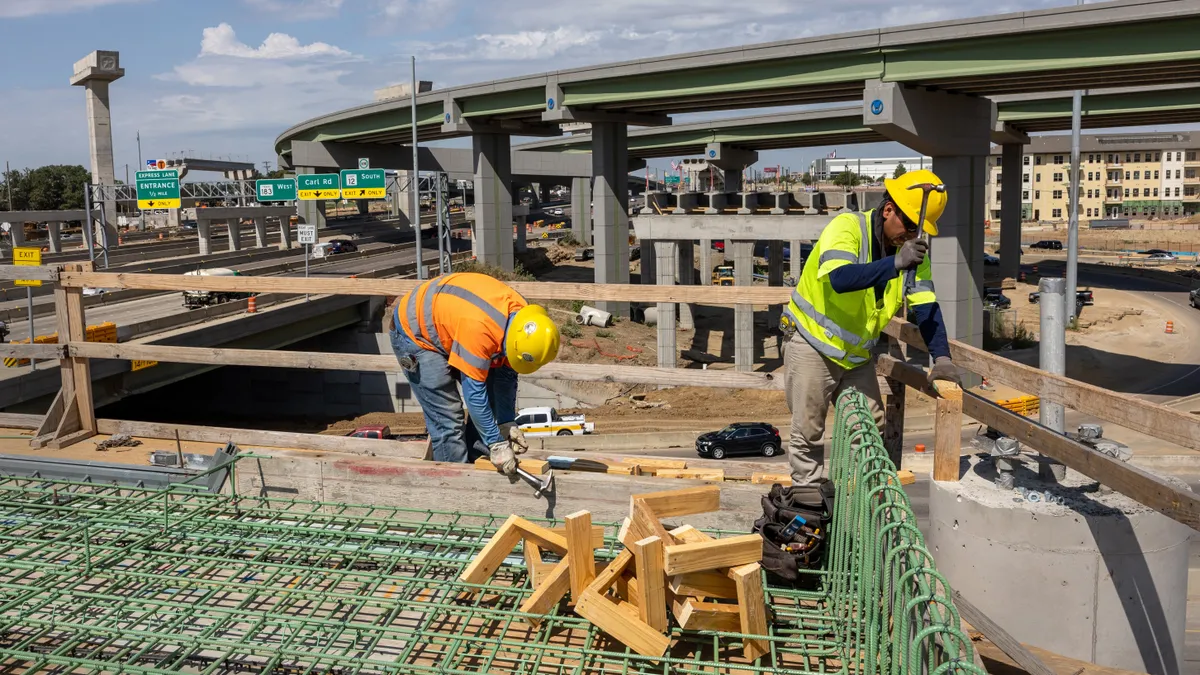The U.S. Department of Transportation needs to recruit, develop and retain an expanded staff to oversee the implementation of $660 billion in funding for programs authorized under the Infrastructure Investment and Jobs Act, while dealing with supply chain issues, rising prices and a shortage of the skilled labor required to build the many capital projects the IIJA will enable, according to the DOT’s inspector general, Eric Soskin, who issued this warning in a report to Transportation Secretary Pete Buttigieg on Oct. 5.
The sheer number of infrastructure projects the DOT will have to manage is mind-boggling. Over the next year, states, territories, tribes and local governments will begin work to improve 65,000 miles of road and 1,500 bridges; invest in 600 airport infrastructure projects; purchase 15,000 new buses, ferries and subway cars; and buy 75 new locomotives and 73 intercity train sets for Amtrak. On top of that, the administration’s five-year goal is to build half a million electric vehicle charging stations.
The transportation department is actively hiring to meet the demands of the infrastructure law, with a goal of adding 1,700 employees over the next five years. But state and local governments, which apply for and receive IIJA funds, “are facing historic shortages of workers with expertise in important areas, such as auditing, procurement, and acquisitions,” the report says.
Labor shortages extend to the construction industry, particularly in skilled trades. That could affect the ability of grant recipients to complete projects on time and on budget. A 2021 report issued by the National Infrastructure Advisory Council found that “the workforce development system in the United States lacks the coordination, data, and strategic human capital management necessary to ensure a skilled workforce for critical infrastructure.”
Inflation often results in changes to construction contracts to account for increasing costs, which can also affect the project schedule, the Office of the Inspector General’s report states. It concludes that “rising prices of critical construction materials will likely blunt the impact of IIJA investments.”
Administrative issues will also challenge the DOT, with the report noting that the infrastructure law appropriated funds for 15 new discretionary grant programs and made significant changes to existing programs. Based on the department’s prior work, both the OIG and the Government Accountability Office found that the DOT could struggle to provide sufficient direction to grant applicants, recipients and program staff while ensuring that they adhere to DOT guidelines, policies and procedures.
The report calls out the Federal Highway Administration and Federal Transit Administration as needing to review additions and revisions to statewide transportation improvement programs and local transportation improvement programs.
“As the Department is aware, the volume of IIJA funds, coupled with the creation of new programs and priorities, present a number of significant implementation and oversight challenges,” Soskin wrote in his memo to Buttigieg.
Chief among those challenges, the report says, is mitigating increased risks of fraud and waste. The IIJA requires that at least 10% of funds the DOT spends on surface transportation, transit and highway safety research and development go to disadvantaged business enterprises, which have sometimes been used as fronts for non-DBE businesses and pass-through schemes.
On a positive note, the OIG credits the DOT with acknowledging the risks and challenges its report identifies and for taking steps to meet the demands placed on it by the IIJA.
The report urges the DOT to strengthen its risk management, be creative and adaptable in dealing with stakeholders and maintain focus on continuous improvement of its processes.












